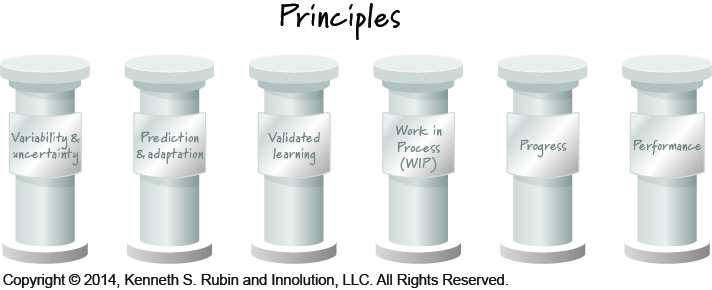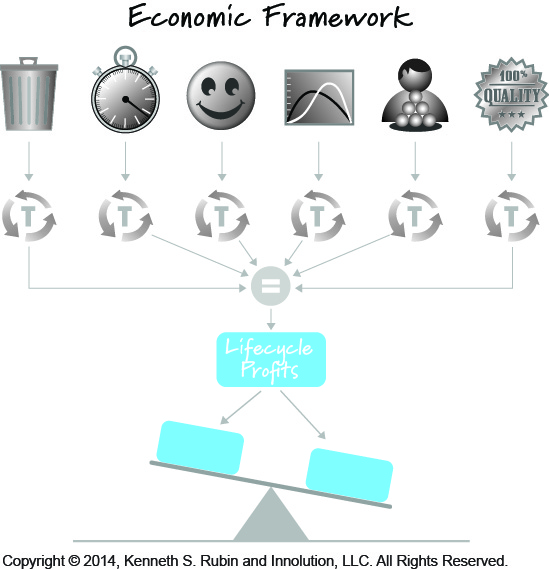Even if all of your teams perform Scrum or any Agile process exactly right, in a textbook-like fashion, you might not achieve your organization’s goals for adopting Agile. Why? In most cases, when organizations fail, it is because they did not apply core Agile principles at both a team and organizational level within a sound economic framework. In other words, they failed to perform Economically Sensible Scrum.
In a recent Executive Update for the Cutter Consortum, I describe what economically sensible Scrum is and how organizations can apply it to achieve desirable business results. You can and should download and read the article in its entirety on the Cutter website. (NOTE: you will need to fill out a simple form on the Cutter website to download the article). In this blog I have included a summary of economically sensible Scrum as described in the full executive update.
Core Agile Principles
Economically sensible Scrum is the application of Scrum within an economic framework grounded in core Agile principles. Let’s break that down a bit, beginning with the core agile principles.

The core agile principles, which should guide every agile effort, can be grouped into categories such as leveraging variability and uncertainty; balancing a desire for prediction (up-front work) with the need for adaptation (just-in-time work); creating opportunities for early, validated learning; properly managing work in process (WIP); measuring progress by what has been delivered and validated, and abiding by agile performance guidelines. These principles are described in detail in Chapter 3 of Essential Scrum.
To be successful with Scrum, the entire organization must understand and apply the core set of Agile principles that underlie Scrum.
Economic Framework
Another vital element of economically sensible Scrum is an economic framework that allows us to evaluate decisions that affect multiple interacting objectives.

Scrum is a tool that teams can use to achieve a variety of objectives during product development, such as creating innovative solutions, eliminating waste, reducing time to market, improving quality, improving customer satisfaction, and so on. What many companies fail to realize, however, is that most of these objectives, while valuable, are secondary to the true primary objective in product development: make good economic choices to increase profitability.
We need to adopt an economic framework in which these secondary objectives are mapped into a single unit of measure called lifecycle profits: the total profit potential of a product over its lifetime (based on work of Donald Reinertsen). By having a common unit of measure we dramatically reduce the effort needed to make decisions. An economic framework allows us to leverage what I believe is the universal language of product development: economics. It is the lingua franca that everyone from the development team to the managers to the executive suite should use to describe the desired outcomes and to describe and balance the myriad choices involved in any product-development effort.
Conclusion
Employing excellent Scrum mechanics at the team level is a necessary but insufficient condition for achieving long-term, sustainable business value with Agile. For organizations to succeed, they need economically sensible Scrum. This includes understanding and applying core Agile principles not only at the team level, but also throughout the organization’s value chain. It also means adopting economics as the universal language of product development and describing and evaluating all tradeoffs and decisions in the context of an economic framework.
I encourage you to read the full article found on the Cutter website, where I explore the three major failings I see at most organizations and how applying economically sensible Scrum can overcome them. You can also take advantage of the free download of Chapter 2, Essential Scrum, for a comprehensive overview of the Scrum framework.